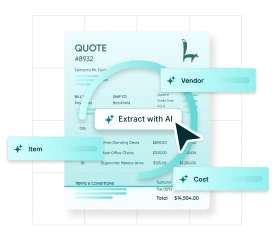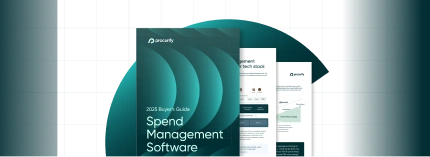Tactical vs. Strategic Sourcing: What’s the Difference
If you ask a group of procurement professionals about the difference between tactical and strategic sourcing, you’ll get a similar answer:
‘It depends.’
Before we discuss the merits of these answers, let’s briefly examine both sourcing strategies so that we can establish a baseline to better understand how procurement professionals justify adopting one sourcing strategy or the other.
Purchasing vs. strategic sourcing
Purchasing and strategic sourcing may sound like the same thing, but there are some key differences. What is the meaning of purchasing in a business context? Purchasing typically involves the immediate day-to-day transactions between sellers and buyers. Purchasing focuses buying, ordering, and paying for the goods and services that an organization needs to operate on a daily basis.
Strategic sourcing on the other hand, strategic sourcing is much more collaborative and future-focused. It extends beyond transactional interactions and includes things like relationship building and contract negotiation with suppliers, process design, cost reduction strategies, and other long-term strategic planning.
Let’s dive in deeper and learn more about strategic sourcing.
What is strategic sourcing?
Strategic sourcing is a systematic, long-term and holistic approach to acquiring current and future needs of an organization. This type of sourcing does this at the lowest total cost of ownership (TCO) and lowest risk to the supply line.
This process creates a closed loop link between customer and the supplier to ensure continuous improvement in three key areas:
- Quality;
- Delivery; and
- Cost and service
By focusing on these areas, businesses can achieve optimal efficiencies in both customer and supplier organizations. There are three very important components of strategic sourcing:
- Spend analysis
- Market research
- Supplier evaluation (or selection and relationship management)
When we look at these components closely, there are several steps involved within each area. A flawless execution of these steps requires human resources with specific skill sets and expensive ERP technology to achieve desired results.
Strategic sourcing in supply chain management
Strategic sourcing in supply chain management can help you achieve the best value, the lowest TCO, and the lowest risk to your supply chain. It is built on ongoing market analysis and building relationships with suppliers.
Because suppliers are critical in every supply chain, when choosing which suppliers to work with, you should consider more than just the price they are offering and the availability of the item. Do they offer volume discounts? Do they have product warranties? What are their other business capabilities? Are their operations ethical?
Choosing the right supplier can lower the TCO and improve your supply chain efficiency. You want to make sure you can trust your suppliers to deliver what you need when you need it.
What is tactical sourcing?
Tactical sourcing, on the other hand, is a short term, transactional activity, commonly practiced in small to medium size manufacturing organizations.
This type of sourcing takes a routine and sometimes reactive approach to purchasing materials and supplies. Instead, it uses quote and order processes to support the production operations. It is however, pro-actively managed within the purchasing organization to ensure the organization has the right material at the right price and right time.
Unlike strategic sourcing, purchasing organization doesn’t particularly focus on requirements of the entire organization. It also doesn’t strive to deeply understand vendors’ core capabilities to support a company’s broader needs.
A quick summary: the differences between tactical sourcing vs. strategic sourcing
Here are some key points to remember about the differences between tactical sourcing and strategic sourcing:
1. Timing
Tactical sourcing is short-term and transactional focused whereas strategic sourcing is a long-term, holistic strategy that contributes to the broader organization’s current and future needs.
2. Business needs and goals
Tactical sourcing is a routine and often reactive purchasing method to address immediate business needs. Strategic sourcing and purchasing is often planned in advance and considers broader business needs and goals.
3. Vendor relationships
Tactical sourcing often doesn’t consider vendors’ complete capabilities but with strategic sourcing, building relationships with vendors and understanding their capabilities is key to achieve the lowest TCO and lowest risk to the supply chain.
Understanding the difference between tactical and strategic sourcing
Based on the above explanation, one would agree that strategic sourcing is the best-known practice when compared to tactical sourcing within procurement organizations. So why do some companies choose a sub-optimal sourcing processes instead of embracing best practice?
Let’s take a look at couple of examples.
A medium-sized manufacturing company
Consider a medium-sized manufacturing company where purchasing has the flexibility to use just about any one of the suppliers in the supply base. Typically, buyers in these situations will use their best judgment to place the order with the supplier who offers lowest price and best delivery dates. This scenario plays out in many purchasing organizations where buyers don’t have time.
Managing day-to-day manufacturing operations is quite different from managing long-term strategic responsibilities. Sometimes, these buyers do not have the procurement technology (ERP) platform or the higher skill set necessary to shift from tactical to strategic purchasing. Their number one priority is to keep the production lines running. Tactical sourcing is the best choice in such operational environments. Essentially, tactical sourcing is the appropriate approach by ‘doing things right’ at these companies.
An enterprise business
Now compare this to another organizational environment. In this scenario, the procurement function has access to a full suite of ERP technology and dedicated commodity teams. Procurement has downsized the vendor base by selecting a small number of ‘preferred suppliers’ after evaluating their core capabilities.
Here, procurement has the appropriate IT support to run enterprise-wide spend reports, perform spend analysis, and conduct market research on various commodities. With these tools and talents at its disposal, procurement can negotiate lowest total cost of ownership (TCO), taking into consideration:
- Quality;
- Delivery;
- Lead Times; and
- Other critical terms
This scenario means that buyers use only approved suppliers based on deeper understanding of the company’s requirements. Needless to say, strategic sourcing is ‘doing the right thing’ for this purchasing organization.
Tactical sourcing vs. strategic sourcing: which road should you take?
Choosing your sourcing strategy largely depends on the kind of environment you operate in, the size of your business, and what your business requirements are.
Smaller businesses tend to take a more tactical approach to sourcing. They often purchase what they need, when they need it. These purchasing decisions are usually based on price and availability.
Larger enterprises often do more strategic sourcing. When making purchasing decisions, they consider the vendors’ capabilities and other value of working with these vendors, the TCO, the item availability, price, and other factors.
Most organizations are going to need to do some short-term tactical sourcing, but it’s always a good idea to consider the long-term needs of the business and plan ahead. One of the most important things to consider in the long run is the TCO, or total cost of ownership. The TCO is the purchase price of an asset plus the cost of operation over its life. TCO factors in price, transportation, storage, training, and maintenance of these assets. Strategic sourcing can help you lower the TCO, which has a significant impact on the bottom line.
There’s no one right answer when it comes to whether you should choose tactical sourcing or strategic sourcing. It all depends on your organization and goals.
Introduce hybrid procurement
A third approach would be a hybrid procurement system. This is supported by ‘affordable ERP technology’ and a small team of two to three commodity specialists. Separation of responsibilities will ensure adequate operational support. It will also offer strategic focus on small number of key commodities. By ‘doing things right’, this procurement organization will find the right balance between both strategies. While both approaches are critical to success, tell us what works best for your organization.

Preview AI Intake for Orders
Take the product tour to see how the new intake experience works.
